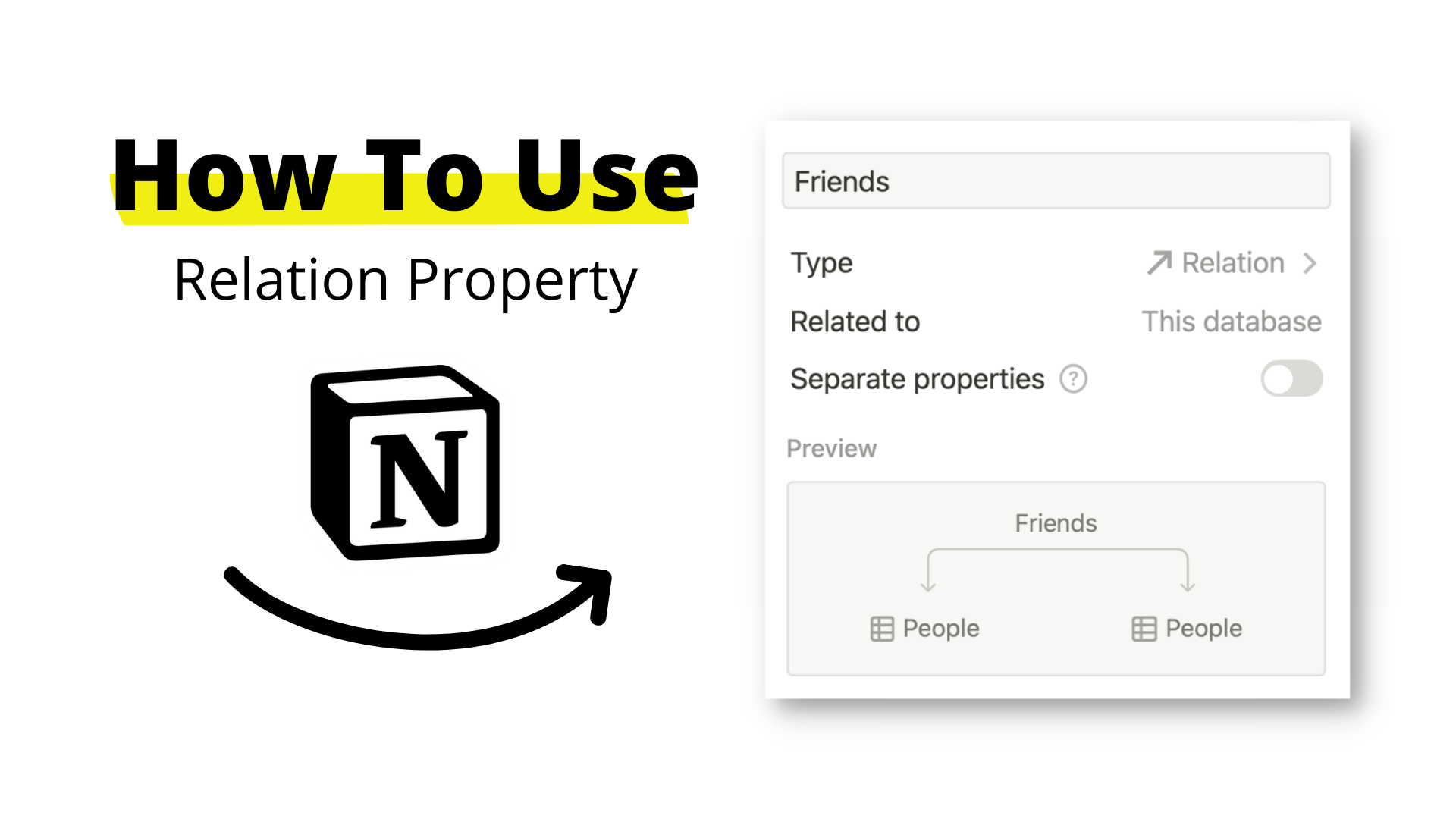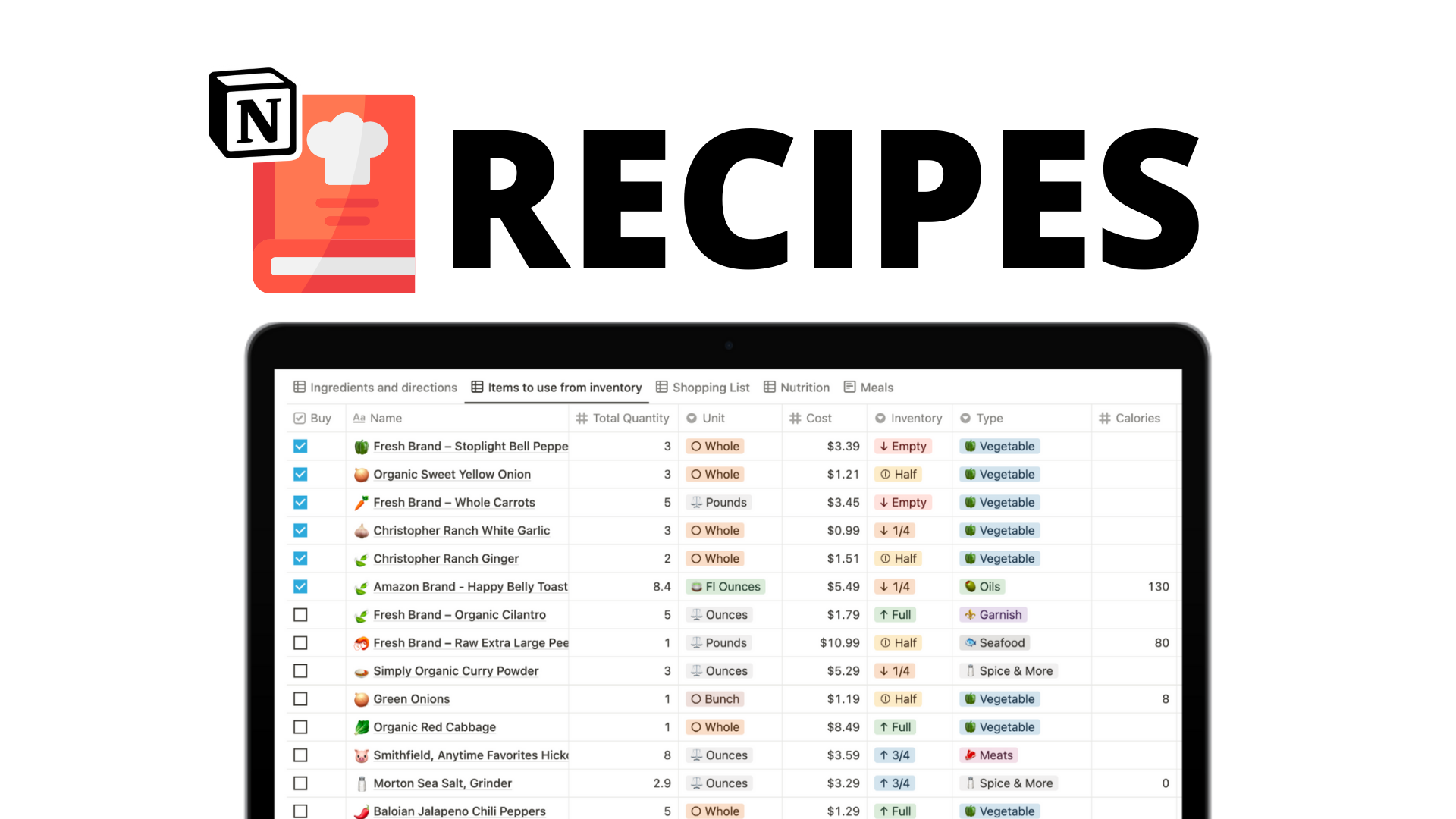📖 Notion Basics
Are you new to Notion and want to learn more about everything the program has to offer? The relation property is an important feature for users who want to create efficient workflows and relationships between multiple database entries. Below is a tutorial on how to use the relation property and what you should keep in mind before using it.
Meal Planner
Record all of your recipes, ingredients, kitchen inventory, and meal planning in one hub.
What Are Relations?
The relation is a database property inside Notion.
Every database you create in the program (trigger: /table) comes with a list of properties to help describe every entry, or row. The relation property allows you to connect one database entry to another database entry.
To add a new property, click the + button along the top of the table and customize a new column. Again, these columns help to describe each entry.
Above is an example of a database full of People (1st database). I created a relation property to connect each person to their Birthplace (relation). All places are located in an Atlas (2nd database) database.
The relation property can connect two databases together or two database entries from the same database.
Ways To Configure A Relation
Once your relation is in place, ask whether you need a backlink from the database entry you’re connected to.
Using the example above, if some People are born in Paris, do you want to see an automated collection of People born in Paris upon navigating to the page in Atlas?
Select Show on … to create an automatic backlink in the 2nd database. This backlink will also appear as a relation in the other database.
Self-Relational Property
You don’t always have to connect one database to another. You can also connect one database entry to another in the same table.
For example, I may want to connect David Jacobs in People to his friends that are also in the People database. I can use the relation property again.
There are two options for back linking again, but when you de-select the backlink in a self-relation, that collection of backlinks will still occur — only in the single relation instead of two.
For example, if I input Sally as David’s friend, Sally’s friend property will automatically populate David’s link.
When choosing a relation’s configuration, it’s important to keep context in mind.
Let’s say I want to describe another relationship inside the Person database for Parents. I would not keep the relation in one property, but rather, use a separate relation to generate a Children relation property.
If there were not two separate properties, Harold would populate as David’s parent which is inaccurate.


